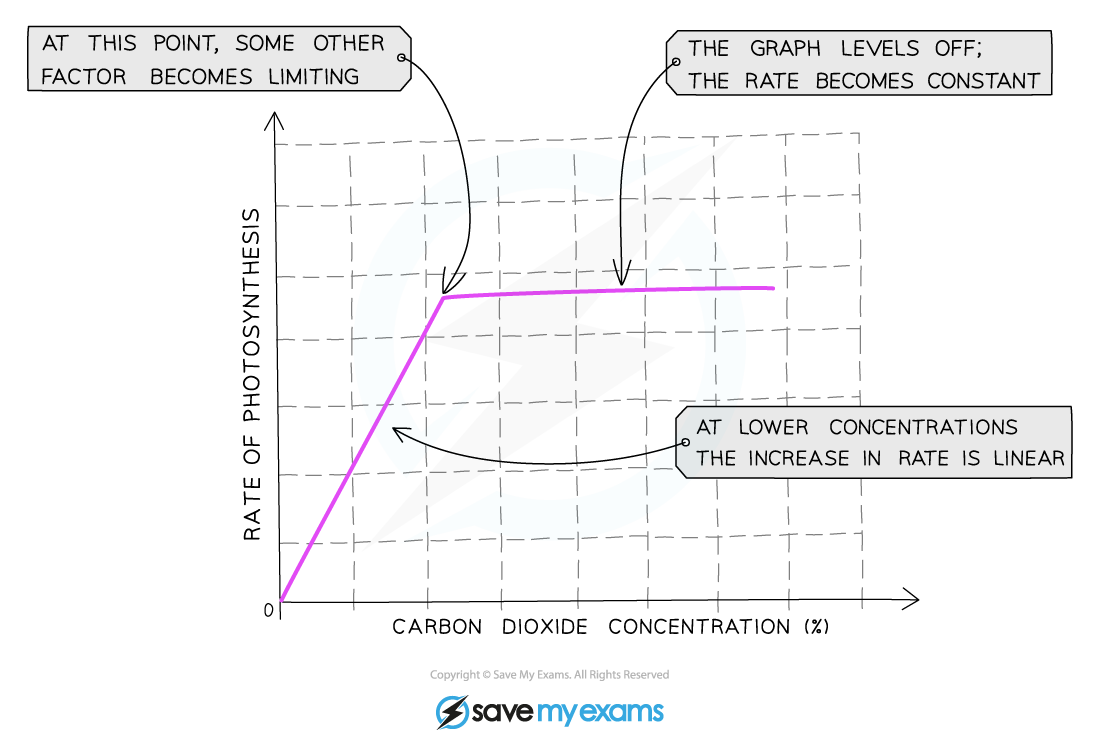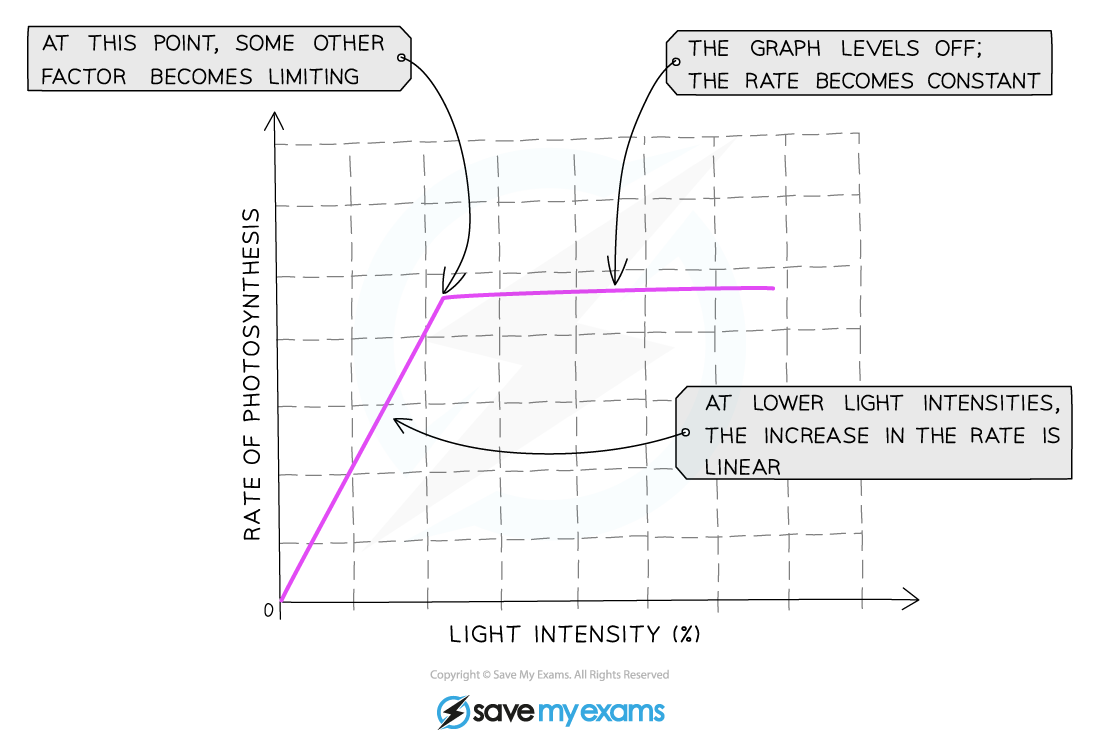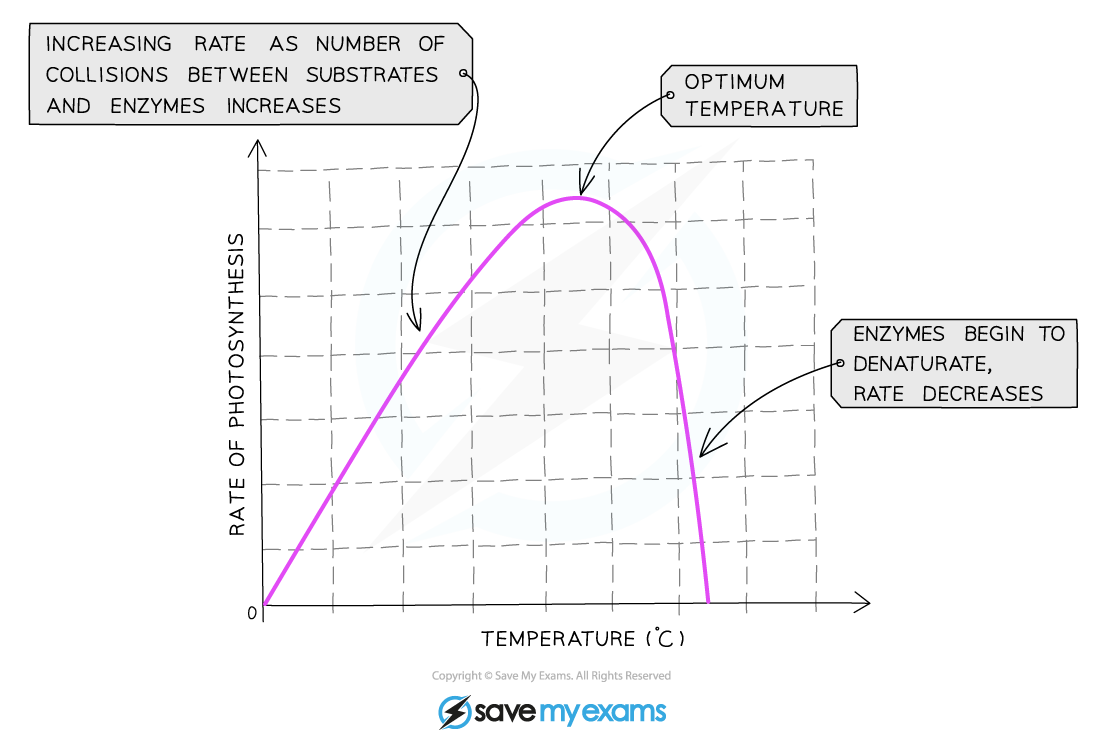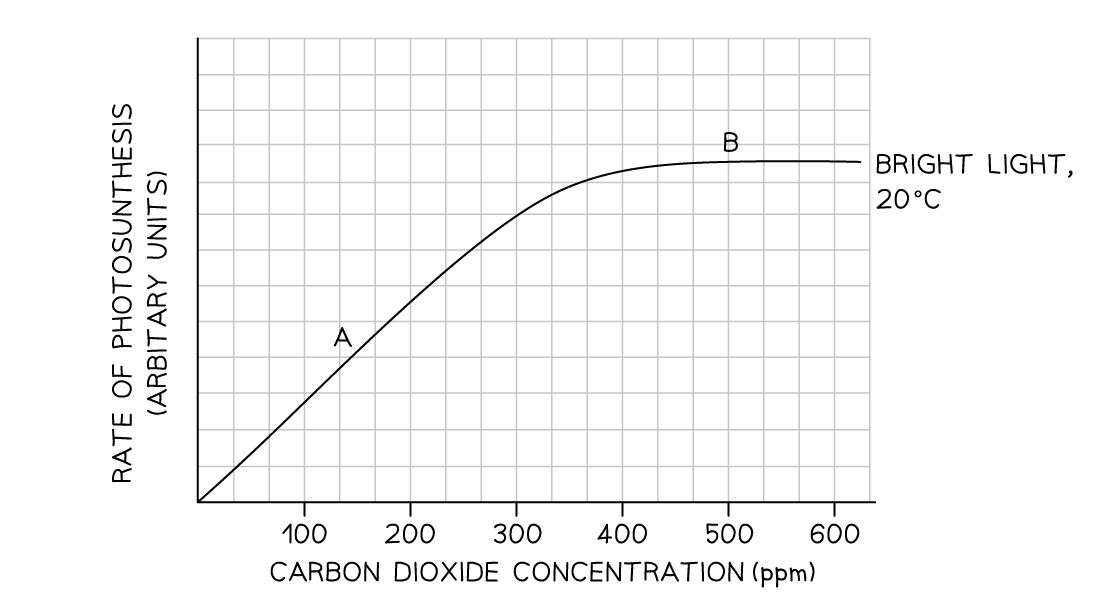Limiting Factors (SQA National 5 Biology): Revision Note
Exam code: X807 75
Limiting factors of photosynthesis
A limiting factor can be defined as:
an environmental factor that limits rate of reaction when it is in short supply
The rate at which photosynthesis can occur is limited by the following environmental factors:
carbon dioxide
light intensity
temperature
Because these factors limit photosynthesis, they also limit plant growth; this is because photosynthesis produces sugar which fuels plant growth
Carbon dioxide
As carbon dioxide concentration increases, so too does the rate of photosynthesis
Carbon dioxide is required for the carbon fixation stage of photosynthesis
This trend will continue until another factor prevents the rate from increasing further; this could be:
temperature
light intensity

Examiner Tips and Tricks
Be sure to refer to carbon dioxide concentration rather than just 'carbon dioxide' when discussing limiting factors.
Light intensity
The higher the light intensity, the higher the rate of photosynthesis
This is because chlorophyll can absorb more light energy to split water and produce ATP during the light reactions
This trend will continue until another factor prevents the rate from increasing furthe, e.g.:
temperature
carbon dioxide concentration

Examiner Tips and Tricks
Be sure to specify light intensity rather than just referring to 'light' in questions about limiting factors.
Temperature
As the temperature of the environment increases the rate of photosynthesis also increases
At low temperatures there are few successful collisions between enzyme and substrate molecules, so the enzymes involved in carbon fixation function below their optimum rate
Increasing temperature increases the likelihood of successful collisions, allowing the reaction to progress faster; this continues until the optimum temperature is reached
At very high temperatures the enzymes that catalyse carbon fixation can denature, meaning that the complementary shape of the active site is lost; this causes a steep decline in the rate of photosynthesis

Analysing the effect of limiting factors
The effect of a limiting factor on photosynthesis can be shown in a graph with:
an environmental factor on the x axis
the rate of photosynthesis on the y axis
An exam question may present such a graph for analysis, as shown in the worked example below:
Worked Example
The graph below shows how the rate of photosynthesis changes with carbon dioxide concentration.

(i) Identify the limiting factor at the point on the graph labelled A.
[1]
(ii) Explain the shape of the graph at the point labelled B.
[1]
(iii) Explain how the shape of the line would change if the temperature increased from 20 to 30 °C.
[1]
Answer (i)
The limiting factor at A is:
carbon dioxide concentration; [1 mark]
At point A the rate of photosynthesis increases as carbon dioxide increases; this shows that carbon dioxide concentration is limiting rate.
Answer (ii)
The shape of the graph at B can be explained as follows:
Temperature / light intensity has become limiting OR it is not warm enough / light intensity is not high enough for reaction rate to continue increasing; [1 mark]
At point B carbon dioxide concentration is still increasing, but the rate of reaction no longer increases along with it, indicating that another factor has become limiting; this factor could be either temperature or light intensity.
Answer (iii)
If the temperature increased from 20 to 30 °C the shape of the line would change as follows:
The line would plateau / level off at a higher rate; [1 mark]
Enzymes are functioning at a rate that is closer to the optimum OR more successful collisions are taking place between enzymes and substrates; [1 mark]
Increasing the temperature would increase the number of successful collisions between enzymes and substrates, meaning that enzyme-controlled reactions progress more quickly. Rate of reaction will therefore not be as limited by temperature, and will plateau at a higher rate.
Note that (iii) is an 'explain' question, so requires you to state why you think this change would occur.

Unlock more, it's free!
Did this page help you?